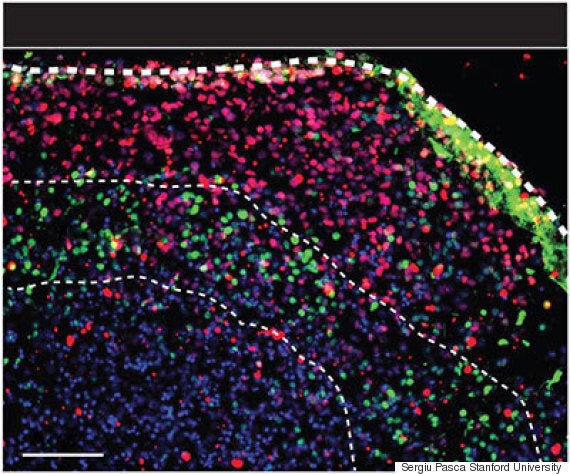Scientists have found a way to grow brain cells using human skin samples.
No, this is not the opening line of a science fiction story featuring a few mad scientists.

Researchers from Stanford University say they've been able to make 'free-floating balls of human brain cells' that exhibit the same behaviour as our cerebral cortex -- the part of our brain responsible for how we perceive our surroundings.
Their research was published in Nature Methods.
The brain balls, scientifically termed 'human cortical spheroids', contain basic structures such as neurons, synapses and support cells that are present in the fully formed human brain.
Sergiu Pasca, an assistant professor of psychiatry and behavioural sciences, worked with his team to produce spheroids that grew to around five millimetres in diameter from a single sample of human skin.
Their method involved taking pluripotent stem cells (cells that can be transformed into any type of tissue under the right conditions) from the skin of five people and treating it with a range of growth factors and molecules that encouraged the stem cells to develop into brain cells.
READ MORE:
After a seven-week wait Pasca and team detected a change.
Since the brain balls, which can be maintained in the lab for nine months or more, also expressed genes in the same way human fetal brains do during pregnancy, the brain containing petri dishes are also a window into how the cortex develops.
The wider aim of the research is to gain a better insight into the causes of schizophrenia, autism and other neuropsychiatric disorders using the human brain instead of a mouse-based model.
Ben Barres a co-author of the study said:
“For instance, for developmental brain disorders, one could take skin cells from any patient and literally replay the development of their brain in a culture dish to figure out exactly what step of development went awry — and how it might be corrected.
"For Alzheimer’s disease, one could do the same to determine if the neurons or glia are abnormal and, if so, what is malfunctioning.
"Now we can move away from mouse as a model and instead generate functional neurons and glia from humans with literally any disease.”